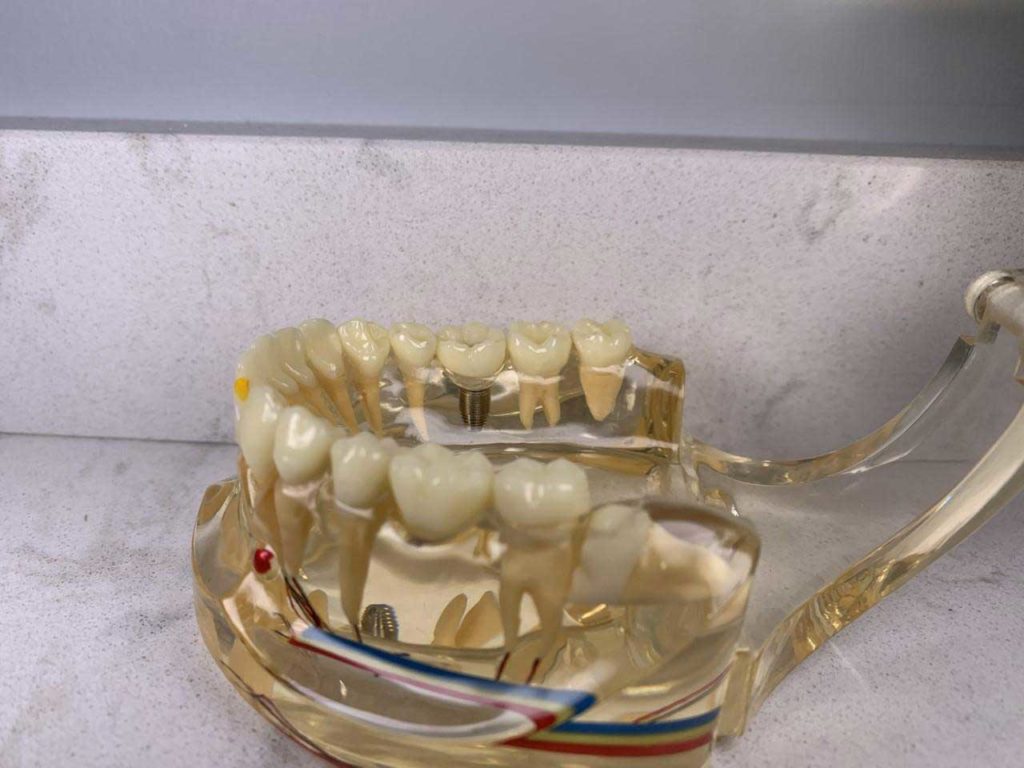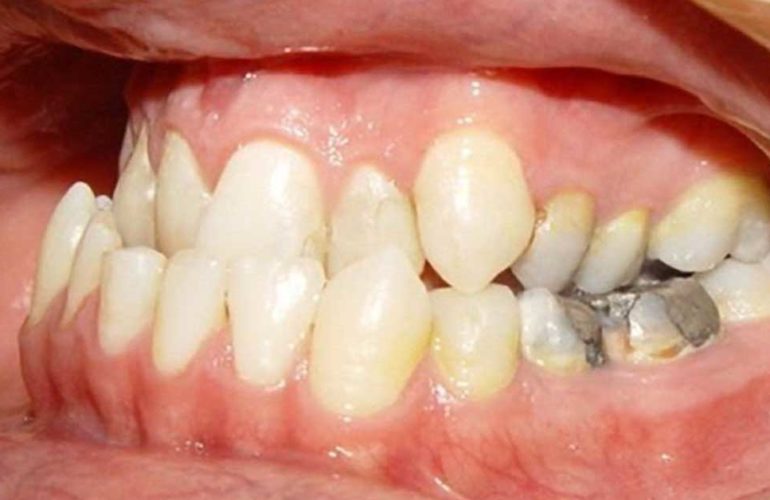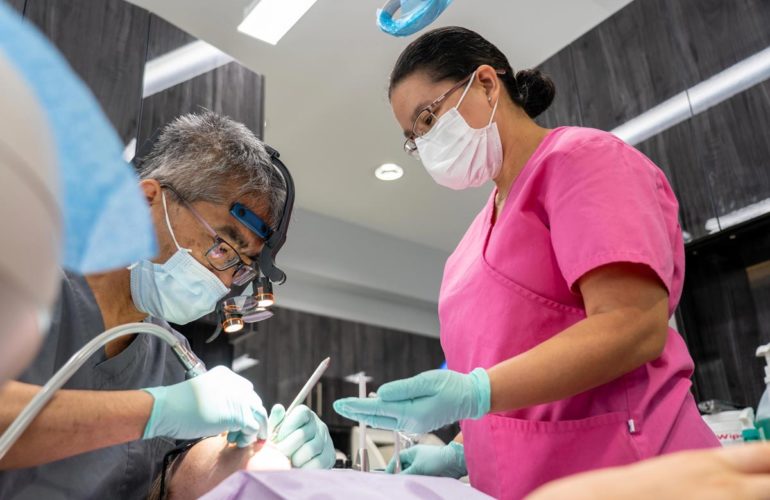There are a few reasons implant therapy is wanted by a patient or recommended by the patient’s dentist. The reasons for having an implant procedure are:
1) To replace a missing tooth
2) To improve the ability to chew
3) To prevent adjacent teeth from drifting
4) To make the removable denture more stable
If you are missing your tooth/teeth and have no concerns about aesthetics, your ability to eat and your dentist have advised you that the likelihood of the teeth drifting is low. A reasonable option is No Treatment and not to replace your missing tooth/teeth.
Besides implants, you should be advised that other options exist to replace their missing tooth/teeth. Among all the options listed below, each has pros and cons. What is suitable depends on an individual’s situation. The possible options are:
1) Removable denture
2) Dental bridge
3) Dental implant therapy
Dental Implant Therapy
Dental Implant therapy consists of two parts
- Dental implant
The first part is the surgical placement of the dental implant in the jaw bone. The dental implant is made with titanium and looks similar to the tooth’s root. The implant is made with titanium which is a bone-friendly material. When the dental implant is surgically placed into the jaw bone, the bone heals around the implant. Once the bone heals around the implant, this provides a stable foundation for the prosthesis.
- Dental crown, bridge or overdenture
The second part is the parts above the jaw bone and visible. It could be a crown, which looks like a natural tooth, a bridge and an overdenture. Collectively, they are called a prosthesis which is the component that sits on top of the dental implant.
The prosthesis may be:
- Fixed on top of an implant such as a crown or a dental bridge
- Removable like a denture sitting on top of the clips of the dental implants. The clips on top of the implants help improve the denture’s stability. Hence it is called overdenture.
Advantages and disadvantages of dental implant therapy
The advantages of having dental implants are:
- If a prosthesis is fixed on the implant, the prosthesis functions like your natural teeth.
- If you have a removable prosthesis, the implants provide better stability to your denture.
- Dental implant therapy often does not negatively affect your adjacent teeth, whereas other non-implant options such as the dental bridge require reduction/shaving of your adjacent teeth.
Disadvantages of dental implants
The disadvantages to having dental implants are:
- Implant therapy does require one or more surgeries.
- Compared to the other non-implant options, the treatment time for dental implant therapy is significantly longer because time is needed to allow the bone and soft tissue to heal around the implant.
- After placement of the dental implant, although the possibility is low, there is always a risk that the bone does not heal properly around the implant. If this occurs, the implant has failed and must be removed. Future placement of a new implant is possible but may require additional procedures such as bone grafting.
- Some patients may develop inflammation, infection or complication around the functional implant. These do not occur often, but when it happens, you will need additional treatment to eliminate the problem. The worst-case scenario may involve the removal of the implant.
- The prosthesis is subject to normal wear and tear. As a result, technical complications may arise, such as loosening the screws, cement washout, and fracturing of the porcelain. These technical complications may be fixed, but the entire prosthesis may need replacement.
- Factors that may be associated with increased risk of implant complications and failure include:
- smoking
- diabetes
- poor care of the mouth
- not following the dentist’s recommendations
- not visiting the dentist for regular monitoring and care
Implant surgical procedure
Regarding any risks from the implant surgery, generally, the procedures are minimally invasive and therefore carry little risk. However, there are possible complications that include:
- Infection following surgery. This is unlikely if you use the prescribed medications before the surgery.
- Implant failure. There is less than a 10% chance that the implant(s) will become unsuccessfully attached to your jawbone.
- Nerve damage. If there is minimal bone height in the lower posterior jaw, implants may be placed close to the central nerve of this jaw. This nerve will be identified at the surgery, and all precautions will be taken to protect it from damage. However, occasionally because of post-surgical swelling, the nerve may give altered (generally reduced) sensation for a period of days to months before returning to normal. In rare instances, the change in sensation may be permanent. If nerve function is altered, it could result in tingling, pins and needles, and/or burning sensations. Most commonly, it is a numb feeling on the surface tissue overlying the implants, inside the lip and on the surface of the lip. There would be no effect on muscle movement or facial appearance. In other words, damage to this nerve will not cause any paralysis.
- Damage to the roots of adjacent teeth. In infrequent instances, implants placed adjacent to natural teeth may damage the adjacent tooth/teeth during the implant site preparation. If this occurs, further treatment may be necessary to deal with the tooth damage.
- Encroachment into the nasal cavity or the maxillary sinus. Although there may be some initial discomfort and minor nasal bleeding, implants that penetrate the spaces typically heal well. In some instances where the pain persists, additional medical treatment may be required later. Rarely it may be necessary to remove an implant.
- Failure of the bone graft. In some instances, bone grafting procedures may not provide adequate bone for the subsequent placement of dental implants due to complete or partial failure of the bone graft because of poor healing and graft infection.
Should any implant not properly attach, it will be removed. If the conditions are still favourable for an implant, another attempt to place an implant will be performed; otherwise, other options like a bridge or a denture can be considered.
It is anticipated that the implant(s), if successful, will function for many years if you take care of them. However, the longevity of the implant(s) depends on many factors, including:
- good general health, excellent oral hygiene,
- complicating oral habits such as night grinding,
- regular dental care for your remaining teeth,
- regular check-ups for the implant(s) and the attached the crown(s),
- and a smoke-free lifestyle.
Bone grafts and membrane
For successful implant therapy, there must be enough bone. If there is not enough bone, the patient may need surgery to increase the amount of bone. Using bone grafts and membranes is the key to improving bone quantity and quality.
There are potential sources of the bone and membrane:
- Bone harvest from other areas of your mouth.
- Bone purchased from a bone bank- The source of the bone may be from human or bovine. These bone tissues are regulated by the strict organ donation criteria, where donors are screened and tested for transmissible diseases. The harvested bone undergoes intense processing and retests.
- Membranes used are of bovine or porcine origin.
- The bone grafts and membrane used are safe to use. Specifically with the materials that we use, to date, there has been no documented case of disease transmission (hepatitis, syphilis, blood and tissue infections, and the AIDS virus).
 The clips on the implant can hold the denture down
The clips on the implant can hold the denture down
 A molar crown attached to an implant
A molar crown attached to an implant
This blog is part of the information we at Affinity Dental Care provide to our patients to help them understand the implant therapy and make the right decision on the treatment. Our goal is to give the patients the proper treatments suitable for their conditions and help them achieve healthiness and confidence that will last.




